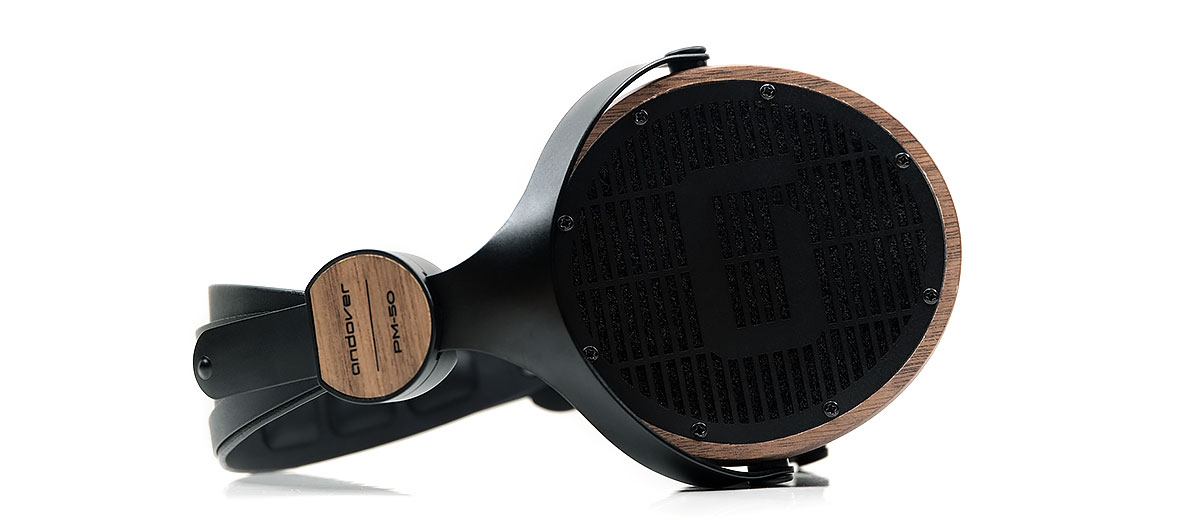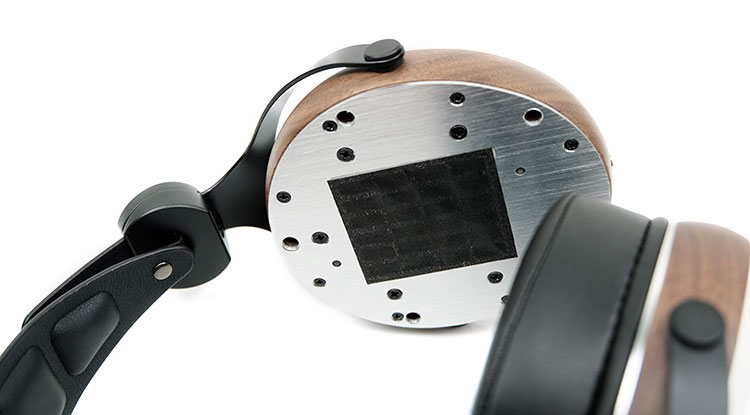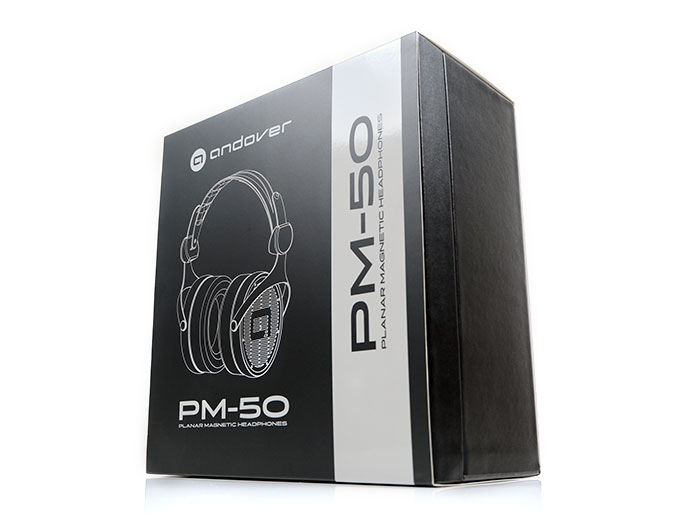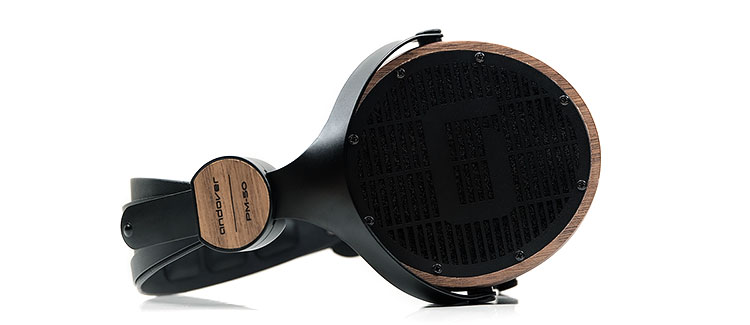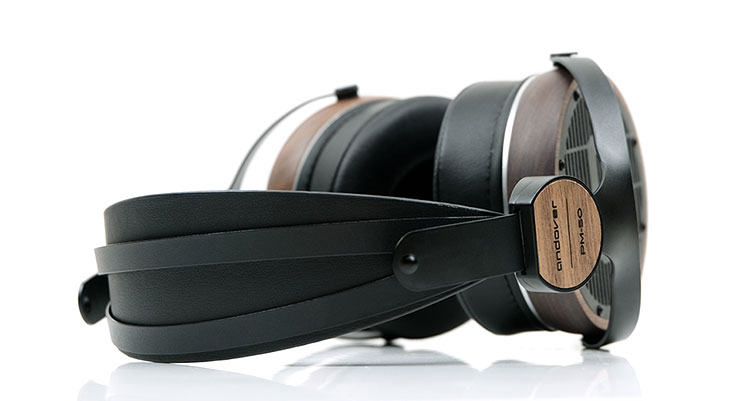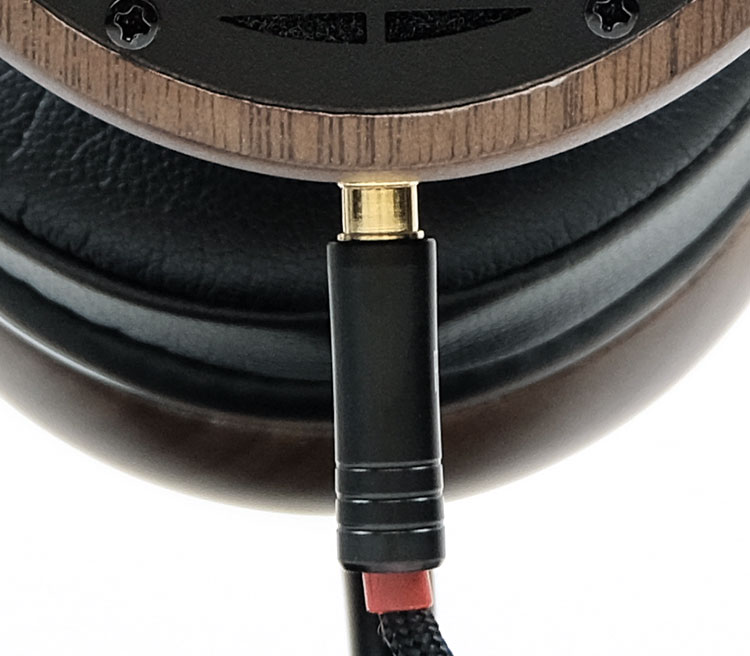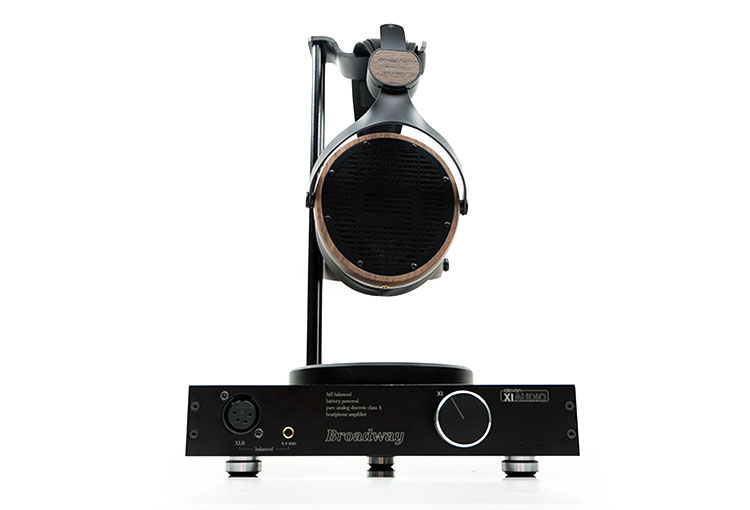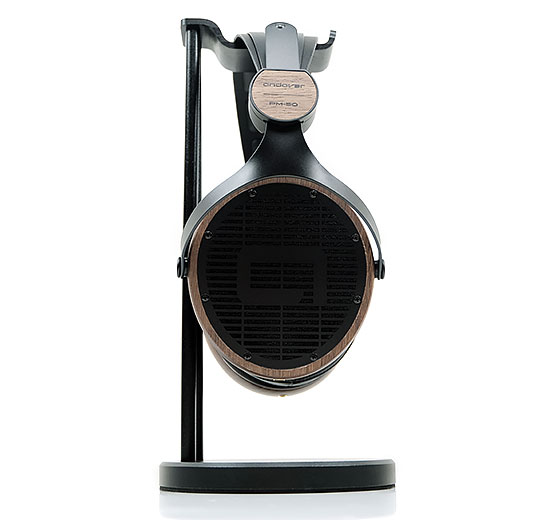The Andover Audio PM-50 is a stylish walnut finished entry-level open-back planar magnetic circumaural headphone. It is priced at $499 SRP.
Disclaimer: The Andover Audio PM-50 sent to us is a sample in exchange for our honest opinion and does not have to be returned. We thank the team at Andover Audio for giving us this opportunity.
To read about other planar headphone products we have reviewed on Headfonics click here.
Andover Audio is a new brand to me but doing a quick bit of research it seems they have been operating now since 2012 with a few marquee audio products already out there.
The PM-50 is their first pure headphone product launch as far as I can tell but they do seem to have strong tie-ups with Pro-Ject Audio from Austria with very interesting BT capable turntable system.
The PM-50 is a planar magnetic headphone that always piques my interest. A price point of $499 SRP is moderately mid-fi or slightly above entry-level for a planar headphone. This is aimed squarely at those window shopping for planar such as the Hifiman Sundara, Verum Audio, or the Brainwavz Alara.
Tech Inside
Before I got the PM-50 in my hands I had no sense of scale from the pictures and presumed this was a circumaural headphone. In the spec sheet, it is indeed listed as over the ear.
In reality, this is a large supraaural open-back planar headphone and closer to the PM series from Oppo. It is also just slightly larger than the Audeze LCD-1 cup size with pads that do press on your ear for a seal rather than your neck.
Driver
Inside those cups, the PM-50 is using a 50mm square planar magnetic design. That’s a shape and size I have not seen mentioned since Blue Ella in 2017 and they launched for a much higher price of $699.
50mm might seem small compared to the listed 106mm size of the Audeze LCD-2 Classic, for example. However, that does not mean a vastly reduced performance.
Final’s D8000, for instance, also uses a rounded AFDS 50mm planar driver, and it is one heck of a performer. Mind you, the PM-50 smaller pad openings and cup size will mean a very different presentation to the D8000.
I have no further information at present on the driver build so I cannot say for sure if this is a single magnetic or a small double-layer magnetic diaphragm. I have no weight specification listed but our scales had it closer to the Oppo PM-1 weight of 390g. Much of that may be in the heavy-set enclosure rather than the magnets, however.
Numbers
The rating of 102dB SPL and 32Ω is very encouraging for those worried about needing a hefty amp to get the best out of the PM-50. I have yet to really try it for scaling capability, that will come in the main review.
Already though, the PM-50 is more efficient on paper than the likes of the Hifiman Sundara at 37Ω and 94dB SPL or the Brainwavz Alara at 20Ω and 94dB SPL. Audeze’s LCD-1 is probably the closest in terms of power requirements, price, and size at 99dB SPL and 16Ω.
Unboxing & Accessories
The PM-50 comes in a fairly smart and professional looking retail package. It is consistent with the likes of the Hifiman mid-fi large stiffened black cardboard boxes with a vinyl wrap and clear graphics showing the headphones and branding.
Inside the PM-50 are deep-set in their own contoured foam holder and protected by a foam ceiling. The accessories are fairly straight forward for a headphone at the price point with a 3.5mm TRS terminated dual-entry cable, additional pads, a quick setup guide, and a quarter jack or 6.35mm converter.
Design
This is a beautiful looking compact planar magnetic headphone. As mentioned, it is a little to the heavy side around 390g possibly more judging by our crude scale comparisons with the Oppo PM-1.
However, it does seem very robust with a very attractive mix of a rich grain walnut and silver trim cup enclosures with a matte black dual-steel headband. The full-size wide arch gimbals and pivot blocks are also finished in a matching matt black steel and do not feel like they will break or crack under pressure.
Those pivot blocks are also finished with a matching branded walnut veneer on both the left and ride sides that nicely complement the main cups look and feel.
Underneath the main steel headband arch, Andover has used a pleather pressure strap system with some memory foam indentations underneath for comfort and support. Actual sizing adjustments are done via the blocks which slide up and down the gimbal. the movement does seem quite smooth with a nice level of resistance so it is unlikely to slip and slide during use.
On The Head
Now there is a bit of history behind the PM-50 fitting. From what I have read, the original version had a very high level of lateral clamping. So much so, that a guide was released by Andover to mitigate that pressure via some bending tweaks. If you have V1 and are wondering what that might be you can find the link to the PDF guide here.
The PM-50 I have is the newer version which should have a more relaxed fitting compared to the original. I do not have both here to compare so I can’t contextualize the difference. What I can say that the pressure system of the PM-50 is more lateral than vertical but fits very well on my head with the smallest headband adjustment.
Because I find the PM-50 more of a large supraaural or small circumaural a lot of the stock pad surface does hit the ear rather than the surrounding next and head which can amplify the effect of lateral pressure.
There are two sets of pads inside the box and both are made of pleather with memory foam inserts. The first set on the PM-50 out of the box is quite deep compared to the shallower second set.
That second set does offer a more relaxed fitting than the first set but I found the pressure slightly uneven compared to the deeper pads on one side. YMMV on these but after initially grabbing the second set I eventually went back to the deeper first set for longer-term listening.
Cables & Connectors
The PM-50 uses a dual-entry 1.75m (measured) High-Grade OFC (Oxygen Free Copper) Cable wrapped in a nylon round jacket. Both ends are terminated with slim black metal barrel gold-plated 3.5mm TRS jacks so it is an unbalanced termination. You do get a 6.35mm conversion jack should you wish to plug it into a desktop component.
I may have a balanced cable equivalent around somewhere with similar connectors that I can try for the main review just to get a feel for the difference going balance might make.
Both connectors are clearly terminated left and right with a small red strain relief on the right just to make doubly sure. There is no labeling on the headphones so technically they are directionally agnostic. However, there is a slight angle to the female sockets on the base of the cups that naturally guide you to which is left and which is right.
This cable has some nice deadening on it and it is not too heavy either. You will not find much in the way of microphonics or memory retention so it is fairly controllable. I would call this a halfway house between portable and desktop use.
Initial Sound Impressions
(Initial impressions formed using a Samsung Note 9, FiiO M15, Lotoo PAW Gold Touch, Cayin N6ii/E01 motherboard portable source, and the Xi Audio Broadway desktop amp connected to a balanced Topping D90 DAC.)
Synergy
Despite the fairly efficient rating, I actually found the PM-50 to need a bit more power and definitely more current than I would have presumed at 32Ω and 102dB.
On the Lotoo PAW Gold Touch, the PM-50 felt comfortable on a high gain setting and volume of 50 with low gain almost around 90. The Cayin N6ii/E10 combo had a similar performance with a volume rating of 70 in low gain and a more manageable 45 in high gain.
The FiiO M15 unbalanced will get loud enough but the imprecise nature of FiiO’s new volume control means I had no clue how loud it was. Forget smartphones with the PM-50 unless you are using a proper dongle. The Note 9 can get reasonably loud but the dynamic range is weak for me.
Connecting the PM-50 with a cryo-treated gold/silver and OCC copper alloy 4-pin XLR balanced cable with some proper power out of the XI Audio Broadway is really where the PM-50 excels.
It sounds far punchier and more expansive than any of the portable sources could muster. No question on the PM-50 benefitting from the additional headroom from the Broadways 1.5mW into 32Ω load.
Tuning
Stock tuning? Not that I am drawing any direct comparisons with the Empyrean because I think that it is on another level but yes, the PM-50 is following a similar target frequency curve that most will find fairly agreeable.
This is more of an n-shaped response curve with a distinctly linear but pure sounding planar bass response and a very smooth lower-mids transition. Mids have an elevated curve up into the upper mids with a strong vocal emphasis and an intimate staging quality. The timbre is warmish and reasonably full-bodied but not overly smoothed out. It has enough bite to add some character and detail into the instrumental texture.
Vocals, forward as they are, refuse to get shouty or edgy. There is a gentle lower treble roll-off from around 5-6k treble that takes the edge of any potential sibilance creeping into the PM-50 mids and percussion timbre. The PM-50 is relatively ‘splash-proof’ in that regard.
One interesting addendum is the performance of the stock cable. Switching over to that cryo-treated gold/silver and OCC copper alloy 4-pin XLR balanced cable delivered a bit more treble presence and a slightly cleaner midrange on the PM-50. Combined with the power of the Broadway this pairing sounded the more resolving of the two cable options.
Stay Tuned!
I know it only out of the box and I need to give it more time but I have a hunch the PM-50 follows the old classic scaling rules of traditional planar designs. That is, feed it more power and it will sing for its supper.
The PM-50 sounds fine with portable sources, with a relatively safe tuning that places a premium on a natural vocal presence and that solid planar bass response. However, there is hidden potential that only a solid amp and perhaps a cable upgrade can tease out.
Just how far can we take a $499 planar performance? That’s something we always look for from a Sundara or Verum Audio’s Verum 1 so I see no reason not to put that to the test for the PM-50 in our main review. Stay Tuned!
Andover Audio PM-50 Specifications
- Impedance Rating: 32 ohms
- Frequency Response Range: 15Hz – 50kHz
- Driver Sensitivity: 102dB/1mW


